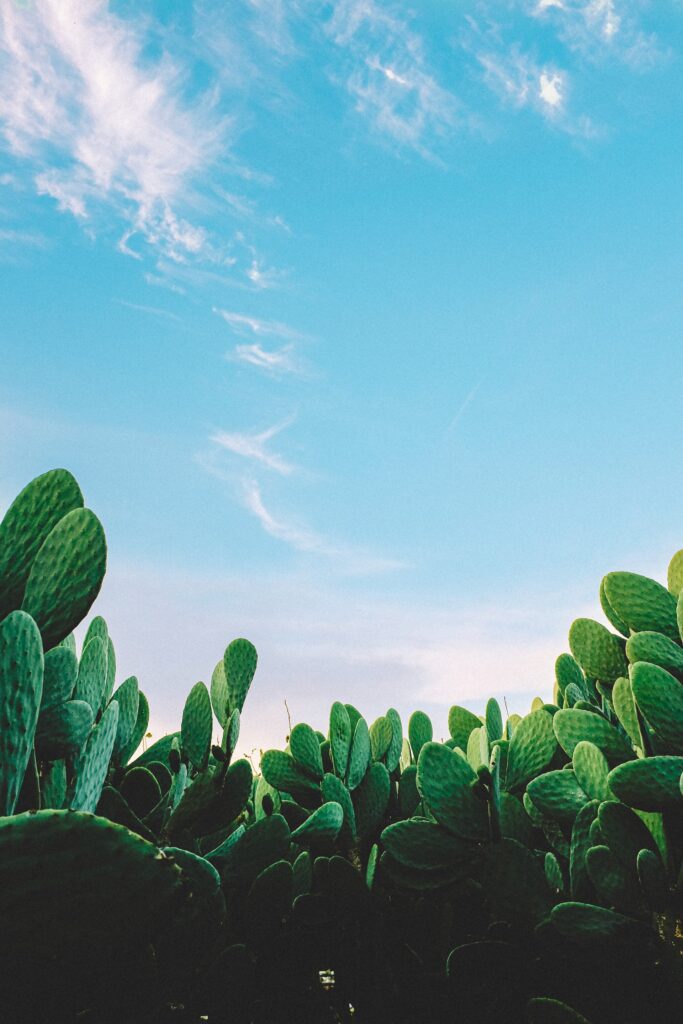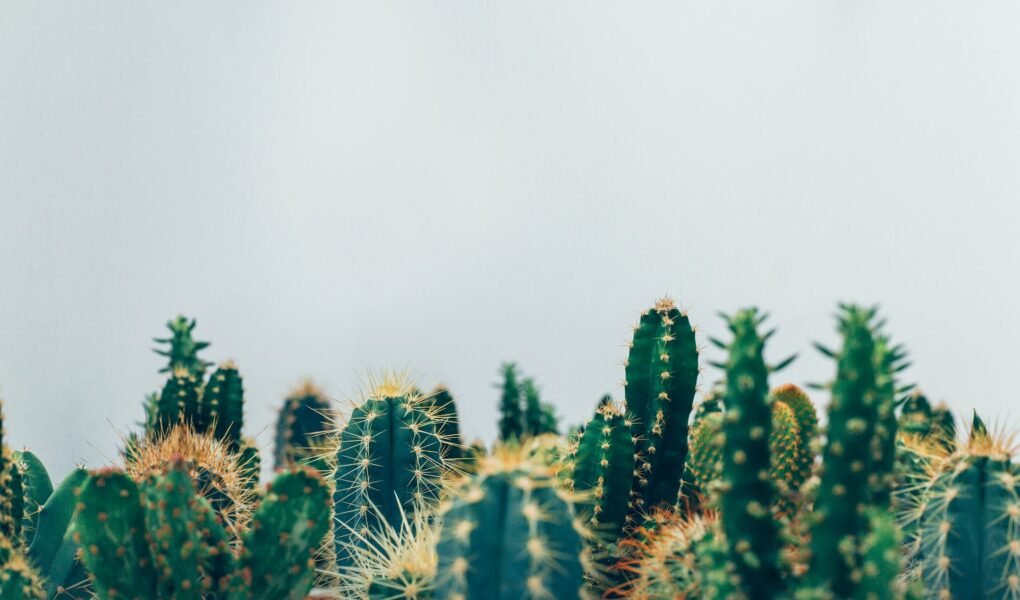The Mexican fence post cactus (Pachycereus marginatus) is indigenous to Central America, particularly Oaxaca, San Luis Potosi, and Querétaro.
The plant is located in Mexico and the southern United States, where high temperatures and little rainfall characterize the climate.
The plant is easy to take care of. This is because it has naturally adapted to grow in rugged environments like deserts. It needs the barest amount of attention to survive. However, it doesn’t mean they don’t require care.
Contents
Mexican Fence Post Cactus Growth Rate
People have utilized the Mexican fence post cactus as a barrier in hotter regions where it may thrive, hence the name. In the wild, these stout plants can reach heights of up to 50 feet, although modern cultivation keeps them closer to 12 feet.
They frequently divide at the base to produce two or more upright-growing branches. The Mexican fence post cactus has five to seven ribs on each of its dark green branches, which together make up its cylindrical body. Each rib has a row of areolas running down the middle, covered with many white spikes.
The University of Arizona claims that as cacti get older, their spines get shorter, and they blossom pink or green bell-shaped blooms. Later in the growing season, prickly red fruits replace the blooms. Many people use these fruits to produce jam.
The Mexican fence post cactus needs minimal maintenance and relatively cold-hardy, thriving for brief periods in temperatures as low as 20 degrees Fahrenheit. However, if you can give it enough heat and sunlight, it will be the happiest and healthiest.
Caring For Mexican Fence Post Cactus
You can grow Mexican fence post cacti with cuttings or seeds. But before you begin, you’ll need to gather a few materials. These include a tiny container, well-draining cactus potting soil, gloves, and a sharp, sterilized blade.
Find a stem split from the mother plant to start growing plants from cuttings.
You won’t have to take the original plant out of its container. Simply cut the stem to the point where it branches off with your knife. Then place the cutting in a warm location to dry.
The cut ought to have hardened up within a few weeks. Once it has hardened, insert the calloused side of the stem into a pot of damp cactus-specific soil. Next, put the pot in a warm location where the cactus will take root after it is upright and secured.
Growing a Mexican fence post cactus from seeds is far more challenging. The seeds are available for purchase online or perhaps at a nearby nursery.
Alternatively, you might get your seeds from a mature cactus that produces fruit on your property. Before planting, you must completely dry your seeds, according to Sublime Succulents. Weeks must pass after sowing the seeds in damp cactus potting soil before you see little green sprouts. To promote growth, move healthy young plants into larger containers.
Mexican Fence Post Cactus Flower
The cactus produces spectacular tubular pinkish-red flowers in the spring. It produces spiky, yellowish to red fruit with black seeds after the blooming cycle.
Additionally, since these fruits are edible, birds frequently eat them. However, even if the fruits are not harmful, we advise not eating them.

Types Of Mexican Fence Post Cactus
According to sources, there is just one variant of the Pachycereus marginatus, known as Pachycereus marginatus f. cristata.
However, several Pachycereus species are related and sometimes mistaken for the Mexican fence post cactus.
The Pachycereus genus of cacti is only native to Mexico and its neighboring states, including California and Arizona. They love the sun and warm weather and can withstand droughts for relatively long periods. Several of these tall desert plants are mentioned in Succulent Alley.
- Pachycereus marginatus f. cristata – Also known as The Mexican organ pipe cactus. Due to the demand for its exquisite rippling texture among cacti collectors and enthusiasts, it is rare and pricey.
- Pachycereus militaris – The 15 to 20-foot tall cactus has fluffy-appearing brown and yellow cephalium bristles on its head. When Pachycereus militaris reaches maturity, its distinctive terminal crown will blossom.
- Pachycereus pringlei – Frequently referred to as the Mexican enormous cactus. These cacti are believed to be the largest in the world, with a trunk weight of several tons. It has been said that they can live for up to 200 years.
- Pachycereus pecten-aboriginum – Indian’s comb is the common name for the tree-like cactus. One of the biggest species of cacti is this one, along with Pachycereus pringlei.
- Pachycereus schottii – Known as The whisker cactus. Like its relatives, it grows slowly and has numerous long stems with basal branches.
Toxicity
According to sources, Mexican fence post cactus is not poisonous. Nevertheless, because of their sharp spines, it is best to keep them away from youngsters and pets that might accidentally hurt themselves if they grasp or chew on this giant plant.
Although Pachycereus marginatus is primarily utilized for ornamental purposes, a gardener who is accustomed to working with it can harvest its crimson fruit.
According to sources, fruit usually arrives at the end of spring or the start of summer. Despite their spiky exterior, they have soft interiors that can be used to make jam or jelly.
Mexican Fence Post Cactus For Sale
The Mexican fencepost cactus can be bought in any plant store or online.
Conclusion
The Mexican Fence Post cactus beautifies your surroundings with its long tubular body covered in gorgeous white fuzzy spikes.
Additionally, it is pretty simple to maintain and grow. What are you waiting for if you don’t already have a Mexican Fence Post?
Bring some gorgeous cacti indoors to give your home a desert feel.




